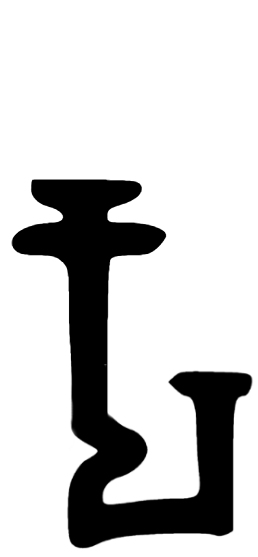Kharapallana on:
[Wikipedia]
[Google]
[Amazon]
Kharapallana (




 , ''Mahakṣatrapa'', "Great
, ''Mahakṣatrapa'', "Great
Dates of Kanishka and the Indo-Scythians
{{authority control Indo-Scythian kings 2nd-century monarchs in Asia 2nd-century Iranian people
Brahmi
Brahmi (; ; ISO: ''Brāhmī'') is a writing system of ancient South Asia. "Until the late nineteenth century, the script of the Aśokan (non-Kharosthi) inscriptions and its immediate derivatives was referred to by various names such as 'lath' o ...
: , ; Greek
Greek may refer to:
Greece
Anything of, from, or related to Greece, a country in Southern Europe:
*Greeks, an ethnic group.
*Greek language, a branch of the Indo-European language family.
**Proto-Greek language, the assumed last common ancestor ...
: Ancient Greek
Ancient Greek includes the forms of the Greek language used in ancient Greece and the ancient world from around 1500 BC to 300 BC. It is often roughly divided into the following periods: Mycenaean Greek (), Dark Ages (), the Archaic pe ...
: ) was an Indo-Scythian
Indo-Scythians (also called Indo-Sakas) were a group of nomadic Iranian peoples of Scythian origin who migrated from Central Asia southward into modern day Pakistan and Northwestern India from the middle of the 2nd century BCE to the 4th c ...
Northern Satrap
The Northern Satraps (Brahmi: , ''Kṣatrapa'', "Satraps" or , ''Mahakṣatrapa'', "Great Satraps"), or sometimes Satraps of Mathura, or Northern Sakas, are a dynasty of Indo-Scythian rulers who held sway over the area of Eastern Punjab and Math ...
who ruled around c. 130 CE.
Name
Kharapallana's name is attested in theGreek
Greek may refer to:
Greece
Anything of, from, or related to Greece, a country in Southern Europe:
*Greeks, an ethnic group.
*Greek language, a branch of the Indo-European language family.
**Proto-Greek language, the assumed last common ancestor ...
form ( grc, Χαροβαλανο) and in the Brahmi
Brahmi (; ; ISO: ''Brāhmī'') is a writing system of ancient South Asia. "Until the late nineteenth century, the script of the Aśokan (non-Kharosthi) inscriptions and its immediate derivatives was referred to by various names such as 'lath' o ...
form , which are derived from the Saka
The Saka ( Old Persian: ; Kharoṣṭhī: ; Ancient Egyptian: , ; , old , mod. , ), Shaka (Sanskrit ( Brāhmī): , , ; Sanskrit (Devanāgarī): , ), or Sacae (Ancient Greek: ; Latin: ) were a group of nomadic Iranian peoples who histo ...
name , meaning "splendid youth".
Reign
He is mentioned as a "Great Satrap" (Brahmi
Brahmi (; ; ISO: ''Brāhmī'') is a writing system of ancient South Asia. "Until the late nineteenth century, the script of the Aśokan (non-Kharosthi) inscriptions and its immediate derivatives was referred to by various names such as 'lath' o ...
:

Satrap
A satrap () was a governor of the provinces of the ancient Median and Achaemenid Empires and in several of their successors, such as in the Sasanian Empire and the Hellenistic empires.
The satrap served as viceroy to the king, though with cons ...
") of Kushan
The Kushan Empire ( grc, Βασιλεία Κοσσανῶν; xbc, Κυϸανο, ; sa, कुषाण वंश; Brahmi: , '; BHS: ; xpr, 𐭊𐭅𐭔𐭍 𐭇𐭔𐭕𐭓, ; zh, 貴霜 ) was a syncretic empire, formed by the Yuezhi, ...
ruler Kanishka I
Kanishka I ( Sanskrit: कनिष्क, '; Greco-Bactrian: Κανηϸκε ''Kanēške''; Kharosthi: 𐨐𐨞𐨁𐨮𐨿𐨐 '; Brahmi: '), or Kanishka, was an emperor of the Kushan dynasty, under whose reign (c. 127–150 CE) the empire ...
on an inscription discovered in Sarnath
Sarnath (Hindustani pronunciation: aːɾnaːtʰ also referred to as Sarangnath, Isipatana, Rishipattana, Migadaya, or Mrigadava) is a place located northeast of Varanasi, near the confluence of the Ganges and the Varuna rivers in Uttar Pr ...
, and dated to the 3rd year of Kanishka
Kanishka I (Sanskrit: कनिष्क, '; Greco-Bactrian: Κανηϸκε ''Kanēške''; Kharosthi: 𐨐𐨞𐨁𐨮𐨿𐨐 '; Brahmi: '), or Kanishka, was an emperor of the Kushan dynasty, under whose reign (c. 127–150 CE) the empire ...
(c. 130 CE), in which Kanishka mentions he was, together with Satrap Vanaspara
Vanaspara (ruled circa 130 CE) was an Indo-Scythian Northern Satrap (''kshtrapa''). He is mentioned as a "Satrap" (Brahmi:, ''Kṣatrapa'', "Satrap") of Kushan ruler Kanishka I on an inscription discovered in Sarnath, and dated to the 3rd year of ...
, governor of the eastern parts of his Empire.
The inscription was discovered on an early statue of a Boddhisattva, the Sarnath Bala Boddhisattva
The ''Bala Bodhisattva'' is an ancient Indian statue of a Bodhisattva, found in 1904-1905 by German archaeologist F.O. Oertel (1862-1942) in Sarnath, India. The statue has been decisive in matching the reign of Kanishka with contemporary sculp ...
, now in the Sarnath
Sarnath (Hindustani pronunciation: aːɾnaːtʰ also referred to as Sarangnath, Isipatana, Rishipattana, Migadaya, or Mrigadava) is a place located northeast of Varanasi, near the confluence of the Ganges and the Varuna rivers in Uttar Pr ...
Museum .
Vanaspara and Kharapallana were ruling for Kanishka over the eastern provinces of the Empire, including the Benares
Varanasi (; ; also Banaras or Benares (; ), and Kashi.) is a city on the Ganges river in northern India that has a central place in the traditions of pilgrimage, death, and mourning in the Hindu world.
*
*
*
* The city has a syncretic tra ...
region.
References
External links
Dates of Kanishka and the Indo-Scythians
{{authority control Indo-Scythian kings 2nd-century monarchs in Asia 2nd-century Iranian people